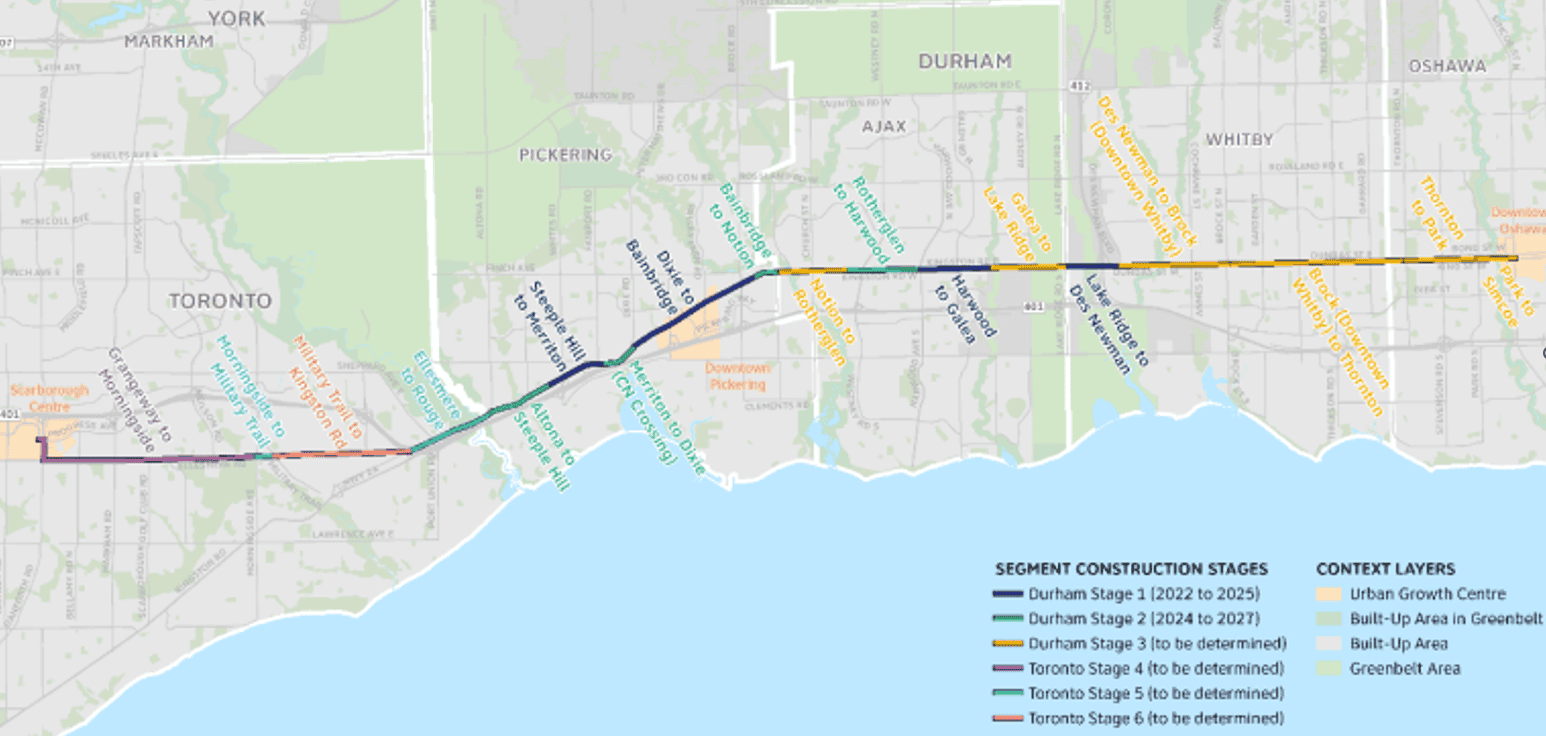High-traffic sections in Ajax & Pickering to be prioritized in Durham-Scarborough rapid bus line
Published November 21, 2024 at 12:36 pm

Durham residents are still reviewing the planning and design work on the Durham-Scarborough Bus Rapid Transit (BRT) project, a 36-kilometre dedicated rapid bus line that will travel from Scarborough Town Centre through Pickering, Ajax and Whitby and into Oshawa on the Highway 2 corridor.
The price tag for the project is likely to exceed $1 billion, with the current end point in downtown Oshawa, with connections to the new Central Oshawa GO station planned at the old Knob Hill Farms site.
High-traffic segments on the west side of Durham’s portion have already got funding in place through the Canada Infrastructure Program and will be part of the first phase, with those sections identified in the report, which is available to view at BRT Planning & Design study.
Those segments are Dixie Road to Bainbridge Drive ($28 million) and Steeple Hill to Meritton Drive ($11 million) in Pickering; Harwood Avenue to Galea Drive ($12 million) and Rotherglen Road to Harwood Avenue ($11 million) in Ajax; and Lakeridge Road to Des Newman Boulevard ($12 million) in Whitby.
Spur lines to Durham College/Ontario Tech University are also in the works.
The planning and design work also included environmental studies and the completion of two business cases which evaluated the preferred design and project benefits.
Preliminary work is already underway, with the $115 million first phase funded through the federal government ($45.8 million), Queen’s Park ($38.1 million) and Durham Region ($30.5 million), completed in 2021.

Option 1 represents the delivery of the entire BRT corridor and assumes that all preliminary design elements will be delivered and operating by 2033. This option involves the construction of 36 kilometres of BRT between Scarborough Centre and downtown Oshawa, with 49 stops in each direction
Option 2 calls for certain high-cost segments to be deferred and prioritizes the delivery of BRT infrastructure by minimizing the initial capital investment, putting off areas that require above average capital costs such as major utilities relocation, retaining walls, higher property impacts, and bridges or culverts.
Those areas would be built after 2033 and include Kingston Road, between Notion Road and Rotherglen Road (1 km) in Ajax and Dundas Street, between McQuay Boulevard/Jeffrey Street and Anderson Street/Hopkins Street (3.7 km) in Whitby.
Option 3 prioritizes high-traffic segments and the delivery of infrastructure, land use development and transit passenger demand while minimizing the initial capital investment by deferring areas that have lower traffic volumes. This option has 56 stops in each direction, seven more than Option 1, and would defer three segments, including two in Oshawa: King Street, between Gibbons Street and Simcoe Street (1.3 km) and Bond Street, between Stevenson Road and Simcoe Street (1.8 km).
The federally-funded portions of the route – Durham Stage 1 – are expected to be delivered by the end of 2027.
Durham Stage 2 will get underway next year, while Durham Stage 3 will take place between 2025 and 2030.
Construction of the three Toronto phases will take place between 2025 and 2033.






